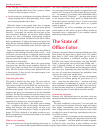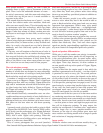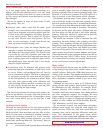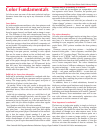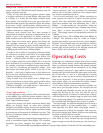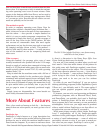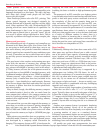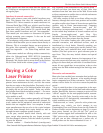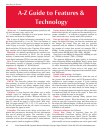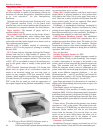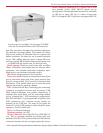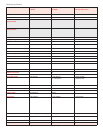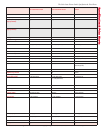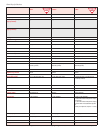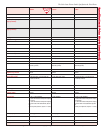
66
Entire Contents © 2006 Prog
ressiv
e Business Pub
lications
.
Copying of Pages Prohibited.To Order: 800 247 2185 or www.betterbuys.com
All-in-one: 1. A multifunctional printer (usually an ink
jet) that can scan, copy, and/or fax.
2. A consumables cartridge on a laser printer that has
both toner and drum in a single unit.
Bit: A piece of digital information consisting of a sin-
gle binary digit (that is, a 1 or a 0). This is the number of
bits a printer uses at each pixel to compose an image in
scales of gray or in color. Typical bit depths are 8 bits for
black-and-white, 24 bits for color. Together, 8 bits make a
byte, another unit of digital information.
See also byte.
Bluetooth: An industry specification for wireless com-
munication;
an alter
native to Wi-Fi. For the printing
industry, it means some mobile phones, laptops, and per-
sonal digital assistants (PDAs) can send jobs to printers.
Byte: A unit of
digital information consisting of 8 bits.
The memory capacity of printers is usually expressed in
megabytes (a megabyte is 1,024 kilobytes).
Calibration: The process by which users ensure that
what they print is consistent with the colors they see on
their monitor
. Printers can’t be calibrated very well; mon-
itors can be calibrated to more closely resemble printed
output. Printer calibration is typically handled through
the unit’s print driver.
CMYK: The four-color palette that comprises color
laser printing
,
in w
hich all colors are created from the
four primary colors: cyan (blue), magenta (red), yellow,
and black. Toner for color printers is typically sold in
these f
our color
s
.
Collation: A print function that allows you to make
multiple copies of multipage originals and have the
machine put the pages in order. Without collation, the
job would emerge with all the page 1’s first, then all the
pa
g
e 2’
s
,
then all the page 3’s, and so forth. With colla-
tion,
the pa
g
es emerge 1-2-3, 1-2-3, 1-2-3, and so on. To
do this, the machine scans the job, stores it in memory,
and outputs the pages in order.
Controller: This refers to the device at the heart of a
printer that processes an electronic file into information
tha
t can be printed on pa
per
. The controller is also
r
ef
erred to as an “RIP” (raster image processor). The
controller is driven by a microprocessor, a semiconductor
whose speed is rated in megahertz (MHz).
Dealer channel: Refers to traditional office equipment
dealers that typically sell copiers and fax machines to cor-
porate customers — in contrast to computer resellers or
retail stores that carry mostly small-office products.
Dots per inch (dpi): A measure of the resolution of an
image: the higher the figure, the finer the resolution and
the sharper the image. Dots per inch are typically
expressed with the number of horizontal dots first and
the number of vertical dots second, for example, 200 x
400dpi. At that resolution, each square inch of an image
would contain 80,000 dots (200 x 400 = 80,000).
Note that we use 600dpi to denote 600 x 600dpi,
as w
ell
as 1,200dpi to denote 1,200 x 1,200dpi.
The apparent difference in print quality is enormous
when comparing 300dpi with 600dpi. But it’s pretty hard
to notice when comparing 600dpi with 1,200dpi on regu-
lar office documents, and even harder with interpolated
values over 1,200dpi. Factors such as ink, paper, and
image type may be more important than nominal resolu-
tion differences.
Double-sided printing: See Duplex.
Drum: A drum, or photoconductor, forms the core of
the process that allows laser- and LED-powered office
mac
hines to create images on paper. It is the rotating
c
ylinder on which a laser writes the image. The surface of
the drum becomes electrically charged by the laser, and
toner is attracted to the areas where the latent image is
pr
esent.
As the pa
per passes through the engine, the toner
is transferred from the drum to the paper. A fuser unit
uses heat to bond the toner to the paper.
Duplex: Double-sided printing. Many printers now
offer automatic duplex. With that feature, the machine
prints on one side
,
r
e
v
erses the page, and then prints on
the other side
. Manual duplex, in which you turn over the
pages by hand once they’ve been printed on one side, is
available on all models.
Electronic collation: See Collation.
Energy Star: Stamp of approval from the US
En
vir
onmental Pr
otection Agency (EPA) for office
equipment that meets various “green” criteria. The differ-
ence in energy efficiency between an Energy Star–com-
pliant model and a non-compliant one can be quite small
Better Buys for Business
A-Z Guide to Features &
Technology



